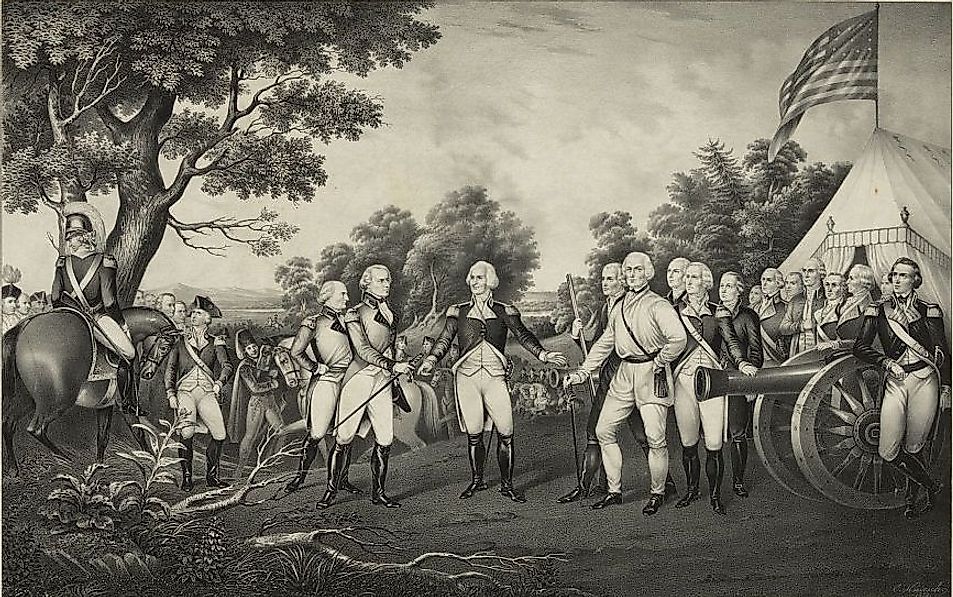The Battle of Saratoga: The American Revolutionary War

5. Background
The two Battles of Saratoga served as a turning point in the war for the Americans and, without them, the American Revolution may very well have turned out quite differently. These two battles took place on September 19th and October 7th, 1777, respectively, in Saratoga, New York. The American colonists' victory in the battles was the turning point in the American Revolution, and led to their receiving of foreign help in the fight for independence from British control. This battle came to be as a result of an embarrassing American defeat, in which the British captured Fort Ticonderoga. Led by General John Burgoyne, the British were nearly certain that victory would be theirs in Saratoga as well.
4. Makeup
The Continental (Colonial) forces were primarily led by General Horatio Gates. George Washington (who at the time was a General and the primary commander of the Continental Army) sent over soon-to-be traitor and then-Commander Benedict Arnold and Colonel Daniel Morgan, to assist Gates. In addition, additional soldiers and rifleman were provided to help Gates overcome the massive British forces. Though Burgoyne commanded the British forces, which also included large quantities of contracted Hessian soldiers, he was aided by Major General William Phillips. Though he was not actively part of the British troops that fought the Americans at Saratoga, General Henry Clinton was nearby to provide aid if need be as well. Ironically, it was Clinton's delay in providing back-up for the British during the second battle that forced Burgoyne’s hand in surrendering to the Colonists.
3. Description
Appropriately dressed in their iconic red coats, the British "Redcoats" were armed with muskets and guns, as were the Hessian (German) soldiers assisting them, although they wore blue coats. The American soldiers were at somewhat of a clothing disadvantage, and they had to make do with the personal clothing that they had. However, their weapons matched those of the British (muskets and guns), and they even had some soldiers carrying rifles, although they were of a smaller caliber. Overall, terrain had little effect on the battle, although the Americans were somewhat more familiar with the territory than the British. In terms of battle strategy, Burgoyne used his famous "divide and conquer" method, while the American forces employed a less formal strategy. The most effective tactical moves for the Americans came towards the end of the second battle, when Arnold's forces came seemingly out of nowhere to overwhelm the British, and forced Burgoyne into surrender. Both forces also actively used spies against one another.
2. Outcome
Though the outcome of each battle was technically split, the Americans overwhelmingly won the Battles of Saratoga. Technically, Burgoyne and his British forces won the first battle, but Gates and Arnold led the American forces to an incredibly convincing victory in the second battle. The casualties were far more severe for the British than for the Americans. Of the roughly 6,600 British soldiers, roughly 300 were killed and another 370 wounded, while 5,900 were captured. For the Americans, a mere 30 of their 6,600 soldiers were killed, and only 100 wounded.
1. Significance
These battles were extremely important to history, as they signaled a shift in the American Revolution’s direction in the Americans' favor. Perhaps the greatest advantage that the victory gave the Americans was the fact that it drew foreign support. Both France and Spain declared war on Britain shortly thereafter, and even sent troops to aid the American forces. In a more general sense, the victory also opened the doors to future international trade with France, and, eventually, all of Europe, Britain included. Since 1938, Saratoga National Historical Park has been maintained on the site by the National Park Service. The location was added to the National Register of Historic Places in 1966.











